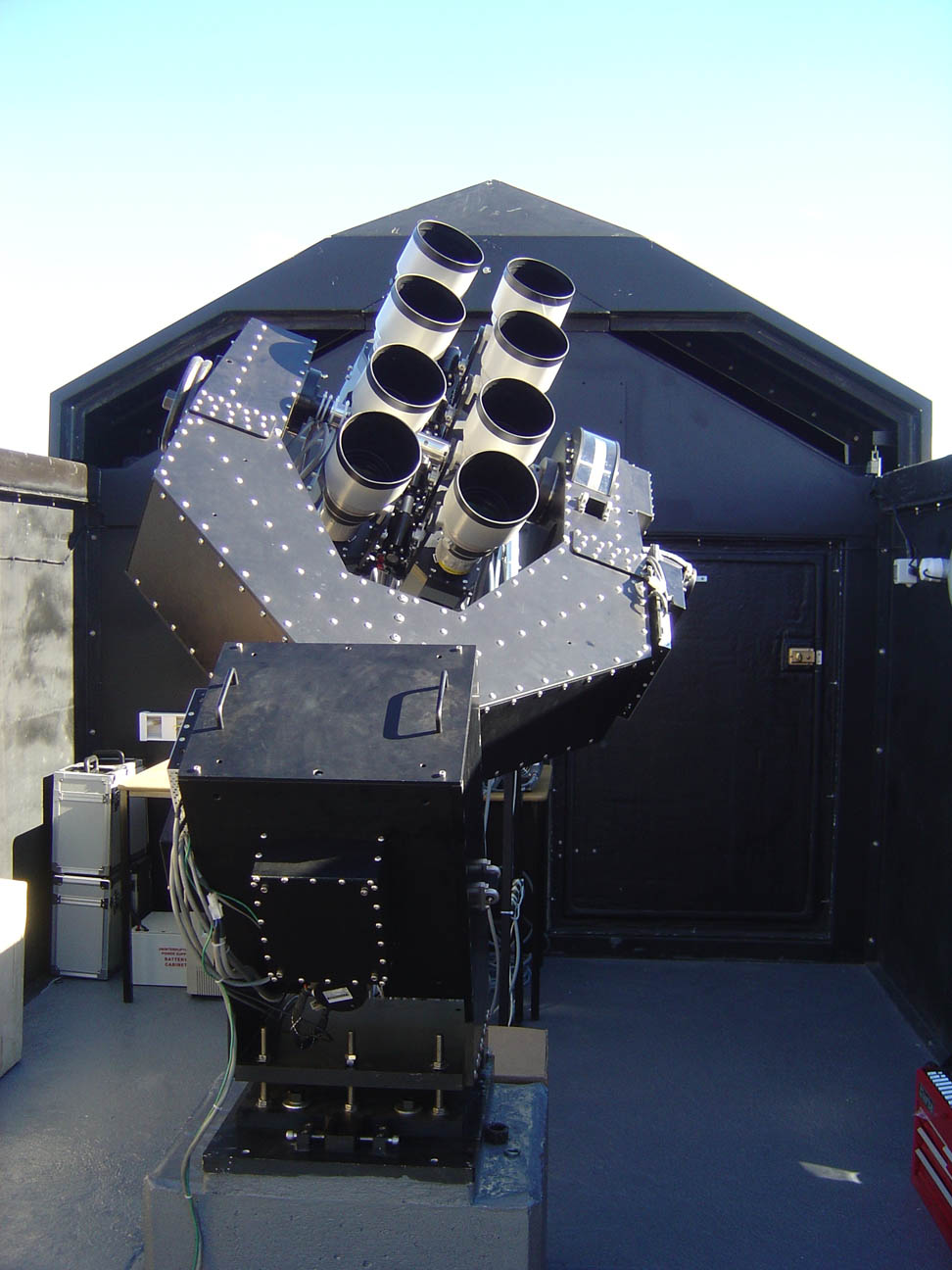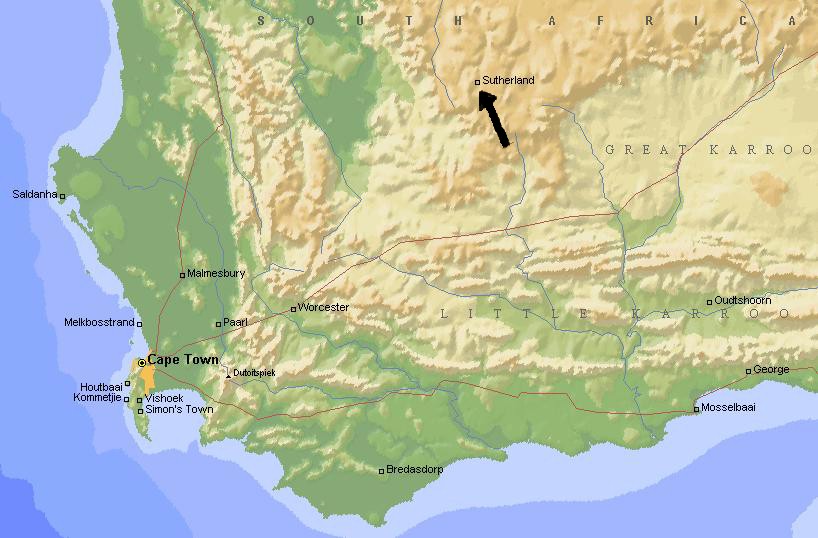

The buildings you see are SAAO telescope domes and buildings, along with the dark, wedge-shaped shadow of planet Earth stretching
into the distance, bounded above by the delicately colored pink band of light between the blue sky above and the darkness below.
(The darkness below is the Earth's shadow.) This pinkish band is called by astronomers the "antitwilight arch". Visible
along the antisunward horizon at sunset, (or sunrise) the pinkish antitwilight arch is also known by the common name, the
Belt of Venus.
Use the slider at the bottom of the WINDOW (there isn't one at the bottom of the picture) to view a 180 degree panorama across the
South African AstronomicalObservatory's hilltop Sutherland observing station.

|
|||||||||||||||||
The giant Southern African Large Telescope (SALT), a telescope whose main lens (a magnifying mirror) is a little over 36 feet (11 meters) wide. For more information on the SALT telescope, click here |
The internet telescope MONET. MONET is an acronym for
MOnitoring NEtwork of Telescopes"; initiated and coordinated
by the University of Gottingen (Germany). The Alfried Krupp
von Bohlen und Halbach Foundation has awarded scientists at
the University of Gottingen's Observatory up to 1,3 million
Euros for the construction of two internet-operated telescopes
with 1.2 meter mirror diameters (f/7). The two fully automatic
robotic telescopes will be located at the observatory sites of
partner institutions in Texas and South Africa.
If you are a teacher, you can use this telescope over the internet to make physics, mathematics and computer instruction in your classroom more exciting. To find out how, or simply to learn more about the MONET system, click here |
. |
The Radcliffe telescope with a 1.9 meter wide mirror |
The 1.0 meter Elizabeth | . |
A 0.75 meter reflector and a 0.5 meter reflector |
. | A garage | YSTAR - a Near Earth Orbits Dynamic Site (NEO-DYS). NEODyS observatories provide information and services for all Near Earth Asteroids, in order to predict whether (or when) an astroid might cross Earth's path, and possibly strike the Earth. These are the telescopes which are featured in the movies about astroid disasters The NEODyS service is in some circumstances time critical (e.g., during special observation campaigns for asteroids at risk of being lost and/or with Virtual or Potential Impactors). To learn more about YSTAR and the NEO-DYS system, click here |
BiSON - BISON stands for Birmingham Solar Oscillations Network, a cooperative programme between SAAO and Birmingham University, UK. This is one of six networked solar telescopes spread around the world which studies the 5-minute oscillations of the Sun. For more information on the BISON network and its solar studies, click here |
ACT - The Alan Cousins Telescope, an automatic photometric telescope which is now available for use by the South African astronomical community and applications for telescope time are encouraged. To find out more about the ACT telescope, click here |
IRSF (open)- The InfraRed Survey Facility. This facility scans the sky in the infrared band For more information about this facility, as well as detailed pictures, click here |
and a storage building | ||||
(Note: for those advanced students who have tried to map this
target site, you may have found an extra building. Hidden behind
the IRSF building in the picture is the planet-hunter
SuperWASP, the telescope for which is shown here.

For more information on the SuperWASP, click
here
The Southern Africa Astronomical Observatory is located on a
on a high mountaintop near the South African town of Sutherland
FEEDBACK MAP
